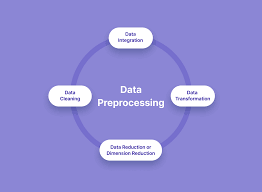Data cleaning, preprocessing, and transformation are essential steps in the data analysis pipeline. These techniques help to improve data quality, remove inconsistencies, handle missing values, and transform data into a suitable format for analysis. Here are some commonly used techniques:
- Data Cleaning:
- Handling Missing Values: Missing values can be imputed using techniques such as mean imputation, median imputation, or regression imputation. Alternatively, missing values can be removed if they are negligible or imputation is not appropriate.
- Removing Duplicates: Duplicate records can distort analysis results. Removing duplicates based on specific criteria, such as identical values in key fields, helps ensure data accuracy.
- Handling Outliers: Outliers, which are extreme values that deviate from the overall data pattern, can impact analysis results. Outliers can be detected using statistical methods (e.g., z-score or box plots) and then treated by either removing them or applying transformation techniques.
- Correcting Inconsistent Values: Inconsistent data, such as misspellings or variations in formatting, can be standardized using techniques like string matching, regular expressions, or reference tables.
- Data Preprocessing:
- Data Scaling and Normalization: Scaling and normalization techniques, such as min-max scaling or z-score normalization, are used to bring data on different scales to a common range. This ensures that variables with different units or ranges contribute equally to the analysis.
- Feature Encoding: Categorical variables are often encoded into numerical representations for analysis. Common encoding techniques include one-hot encoding, label encoding, and ordinal encoding.
- Dimensionality Reduction: High-dimensional datasets can be challenging to analyze and may suffer from the curse of dimensionality. Techniques like Principal Component Analysis (PCA) or t-SNE (t-Distributed Stochastic Neighbor Embedding) can reduce the dimensionality while preserving important information.
- Handling Skewed Data: Skewed data, where the distribution is not symmetrical, can be transformed to improve normality. Common transformations include logarithmic, square root, or Box-Cox transformations.
- Data Transformation:
- Aggregation: Aggregation involves summarizing data at a higher level of granularity. For example, converting daily sales data to monthly or yearly totals can provide a broader perspective for analysis.
- Feature Engineering: Feature engineering involves creating new features from existing ones to enhance the predictive power of models. This can include mathematical transformations, interactions between variables, or creating time-based features.
- Time Series Decomposition: Time series data can be decomposed into trend, seasonality, and residual components using techniques like moving averages, exponential smoothing, or Fourier analysis. This helps in understanding underlying patterns and making forecasts.
- Text Processing: Text data can be preprocessed by techniques like tokenization, stop-word removal, stemming, or lemmatization. These techniques help in converting unstructured text into a structured format suitable for analysis.
- Binning and Discretization: Continuous variables can be transformed into categorical variables by binning or discretization. This can help in capturing non-linear relationships or reducing the impact of outliers.
These techniques are not exhaustive, and the choice of specific methods depends on the characteristics of the dataset and the objectives of the analysis. Data cleaning, preprocessing, and transformation are iterative processes that require domain knowledge and careful consideration to ensure the data is ready for analysis.
SHARE
